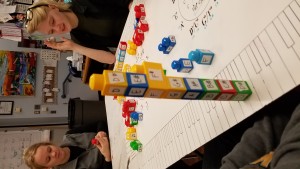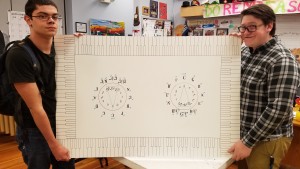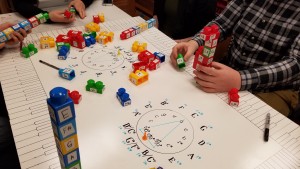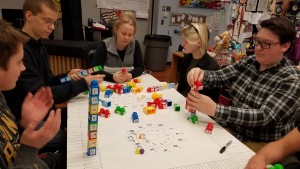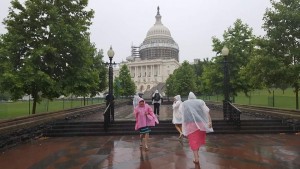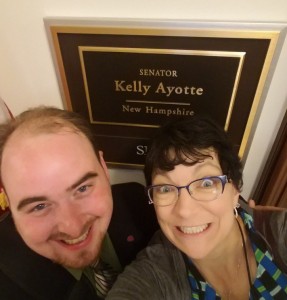
“Miss/Mr./Mrs./Coach/Exalted Granter of Passes – Can I go to the bathroom?” (Or hopefully), “May I go to the bathroom?”
These words probably are the cause of many eye-rolling responses accompanied by a sigh and a “do you really need to?/Why?/Right now?/Can it wait five minutes?/Hurry up!” — or something along that line.
I have taught all age groups. I have raised three children. I am a human being that also has on occasion (more through pregnancies and as I get older) had to use the facilities sometimes in a moment of panic/terror. I also have one child who had massive complications at birth which have rendered her a slave to last-second bathroom runs for the rest of her life (she has had to have her whole “plumbing system” built). Sometimes she wouldn’t know she needed to go until she had to go RIGHT THEN — and I am not kidding…RIGHT THEN.
Admittedly, at the beginning of my career and at times even after 20 years in the classroom, I succumbed to those responses as well. “But we just started class!” “But we are in the middle of a test!” “But EVERY moment in this class could glean some knowledge that could forever impact your life, your future, your very being on this planet!” Like a student having to relieve themselves was a lie, that they were bored, that they were going to go to the magical room of requirement to find the answers to the quiz question that they were stuck on…..etc.
Granted, some WOULD try to find their significant others/friends in the hallway, do a tour of the building, bother some other classroom teacher, go to Dunkin Donuts, stuff towels into a toilet, vape in a bathroom, cure cancer, etc. BUT most would simply sign out, go, and return within a few minutes. They knew the rules…one out at a time (which I explained was in case of evacuation/fire drill/emergency) and return quickly. Many would have to go at the SAME time every. single. day. They were wired that way. I totally get that….so is my husband. Some would have a “surprise” need to go because of something they ate or an oncoming illness. I get that as well. I drink an unadvisable amount of coffee — (hey, we’re all friends here, right?) All of them simply signed out and returned. I would look at the list every day and check the times…just to see if they were out for ½ hour or for 5 or so minutes – if it was longer, we would have a conversation one-on-one showing concern for their need to be in the bathroom for so long they may need to see a doctor. They got the point.
Lately, I have seen insane ideas for “bathroom passes” from esteemed colleagues on a variety of teacher social media groups, Pinterest, etc. Some are simple and small…some are outright beyond. A cement block, a broken instrument, a crash cymbal, a rainbow-painted sousaphone, a baby carrier, a LARGE piece of art — a CAPE ….the list goes on and on (see the attached bored teachers link for more torture devices showcasing the biological functional needs of almost every human on the planet).
20 years ago, I would have laughed and pondered actually doing something similar. I would have thought it was silly, or tongue-in-cheek…and thought nothing of it. The more that I see these things pop up, however, the more frustrated I have become. “Lighten up” and “Get over it, it’s funny” are thrown around in response to any teacher who takes issue or shows concern about such a practice.
For one thing…the germs that would get on such passes is nuts. How does one wash hands or remember to while lugging such a pass around? Where do those germs get transferred to – hands, equipment, doorknobs, classrooms, and other humans, I would guess.
Secondly, and more importantly, how can we say we cultivate a culture of respect and caring in a classroom by calling attention to each student who just needs to attend to one of the most basic of human needs? That middle school girl with the look of panic on her face as she realizes that she may have *gasp* started her period? Yeah…let’s make her grab that cement block. That will help as she throws the sweatshirt around her waist hoping that it is a false alarm. Can you imagine during a faculty meeting having to go and raise your hand and then be handed a door? (Seriously…I have even seen a frigin DOOR as an example).
I implore you – stop it. Stop making something that is natural and necessary and 99% of the time NOT ABUSED by most of the students into something that deserves attention in a most ridiculous way. Of all of the battles we face each day in the classroom, why do we choose the use of the bathroom as the hill to die on?
Find a system that works for you and your classroom (a simple sign-out should do…with name, time out/time in and a pen/pencil attached to the clipboard next to some hand sanitizer just in case). If it is abused, have a conversation. Passes that travel with students are germ-crazy – let’s try to move away from this practice unless your school requires such a thing. If they DO require such a thing, put a simple pass on a lanyard and have students wear it around the neck so that they are hands-free.
I just can’t anymore with this. As someone once said “Everybody Poops”, but not everybody should be told when they have to do so — or worse, that they can’t unless they wear a placard that says “Hey, I have to go POOP!”.

 Though I am known for many things, a lot of folks know me for my shoe collection. Even when I am away at conferences or events, a friend or colleague will say “I always look down to see what shoes Heidi is wearing”.
Though I am known for many things, a lot of folks know me for my shoe collection. Even when I am away at conferences or events, a friend or colleague will say “I always look down to see what shoes Heidi is wearing”.
 Across the room is a teacher soul mate that I met in a previous year, but got to know and love at a fellowship in Kansas. Her eyes tell the best stories of love and hope and engage you immediately. She is a teacher soul mate. Sitting next to me is a woman who makes everyone around her feel that they are the most important person she has ever met. She is also in my top five hugger list. (Blog coming later about that). She is a teacher soul mate. A teacher that was designated my sole/soul mate tonight is one that I met through this organization, but grew to know in the trenches of PhD work together. She is patient, kind, and full of love for the profession of teaching. I could go on and on about the dozens of teachers that are my teacher soul mates as the room is full of them. They are of all disciplines, and from all over the world. They are of different genders, races, political affiliations, religions, hair colors, and accents — yet we all speak the same language — a language of PASSION for GREAT TEACHING.
Across the room is a teacher soul mate that I met in a previous year, but got to know and love at a fellowship in Kansas. Her eyes tell the best stories of love and hope and engage you immediately. She is a teacher soul mate. Sitting next to me is a woman who makes everyone around her feel that they are the most important person she has ever met. She is also in my top five hugger list. (Blog coming later about that). She is a teacher soul mate. A teacher that was designated my sole/soul mate tonight is one that I met through this organization, but grew to know in the trenches of PhD work together. She is patient, kind, and full of love for the profession of teaching. I could go on and on about the dozens of teachers that are my teacher soul mates as the room is full of them. They are of all disciplines, and from all over the world. They are of different genders, races, political affiliations, religions, hair colors, and accents — yet we all speak the same language — a language of PASSION for GREAT TEACHING.




